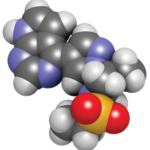The majority of patients were women starting a JAK inhibitor by 50 years of age.
The main reasons for ending JAK inhibitor treatment were adverse reactions (34.7%), followed by secondary failure (28.4%). Switching occurred in 57 patients. Of these, the main therapeutic choices were changes to anti-TNF agents (n=16) or anti-IL6 agents (n=15); 25 patients were cycled to another JAK inhibitor. Eight patients did not start another treatment, and five patients were lost to follow-up.
Conclusion
This small retrospective study showed that after JAK inhibitor failure, the retention rate after nine months was 83.3% for cycling JAK inhibitors and 73.5% by patients who switched to another medication class. Seventeen patients were not studied due to a treatment period of less than nine months.
Switching to another medication class was used mostly by patients with side effects or primary failure. Cycling to another JAK inhibitor was most commonly used for patients who stopped treatment due to secondary failure and in patients who had failed biologic DMARDs.
Although this study was small and retrospective, it shows the outcomes of real-life patients and subsequent medication responses. Larger studies that are prospective in nature would help individuals decide on future treatments for their rheumatology indications.
Michele B. Kaufman, PharmD, BCGP, is a freelance medical writer based in New York City and a pharmacist at New York Presbyterian Lower Manhattan Hospital.
References
- Muñoz Martinez P, Mas Sanchez L, Grau Garcia E, et al. After JAK inhibitor failure, “switching” or “cycling”? [abstract: 2146] Arthritis Rheumatol. 2023; 75 (suppl 9).
- Tofacitinib (Xeljanz) approval letter. Pfizer Inc. 2012 Nov 6.
- Tofacitinib (Xeljanz) REMS-modified approval package. Center for Drug Evaluation and Research. 2015 Feb 11.

